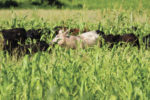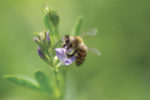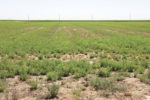Plant Health
ARTICLES
Fall livestock grazing should be managed to leave sufficient residual for cool-season grasses to develop the framework for the next season’s growth.
Read More
Is this alfalfa stand good enough to keep?
Fall assessment allows time for fall tillage and alternative cropping strategies before fall fertilizations and spring herbicides are applied.
Read More
Building a strong foundation for your feed program begins with high-quality silage
Good management starts in the field before the crop is even harvested.
Read More
Trend toward alternative forages means adjusting crop nutrition protocols
As the trend toward alternative forages grows, ongoing research and on-farm trials will be essential for refining crop nutrition strategies.
Read More
Cover crop confessions: Mistakes we made and lessons we learned
Cover crops can be a challenge to master, but experimenting and making four necessary adjustments can help you achieve all the benefits the crops offer.
Read More
The essential bond between honeybees and forage crops
There is a crucial yet often underestimated role of pollinators, particularly honeybees, in forage crop production. While domestic and native colonies face growing challenges, farmers can implement practical strategies to preserve and enhance pollinator populations.
Read More
Preview feeds’ future with the power of data
Reviewing tracked data from what has been harvested can give us a better idea of what to prepare for when we begin feedout.
Read More
Frost seeding clovers into tall fescue pastures provides multiple ecosystem services
Ball, crimson, red and white clovers can be successfully frost seeded into tall fescue pastures as a strategy to create a grass-legume mixture and to improve pasture and livestock responses.
Read More
How did the 2023 alfalfa seedings survive the summer?
There are economic benefits to turning over low-yielding stands and taking legume credits and rotational benefits rather than keeping the low-yielding field.
Read More








